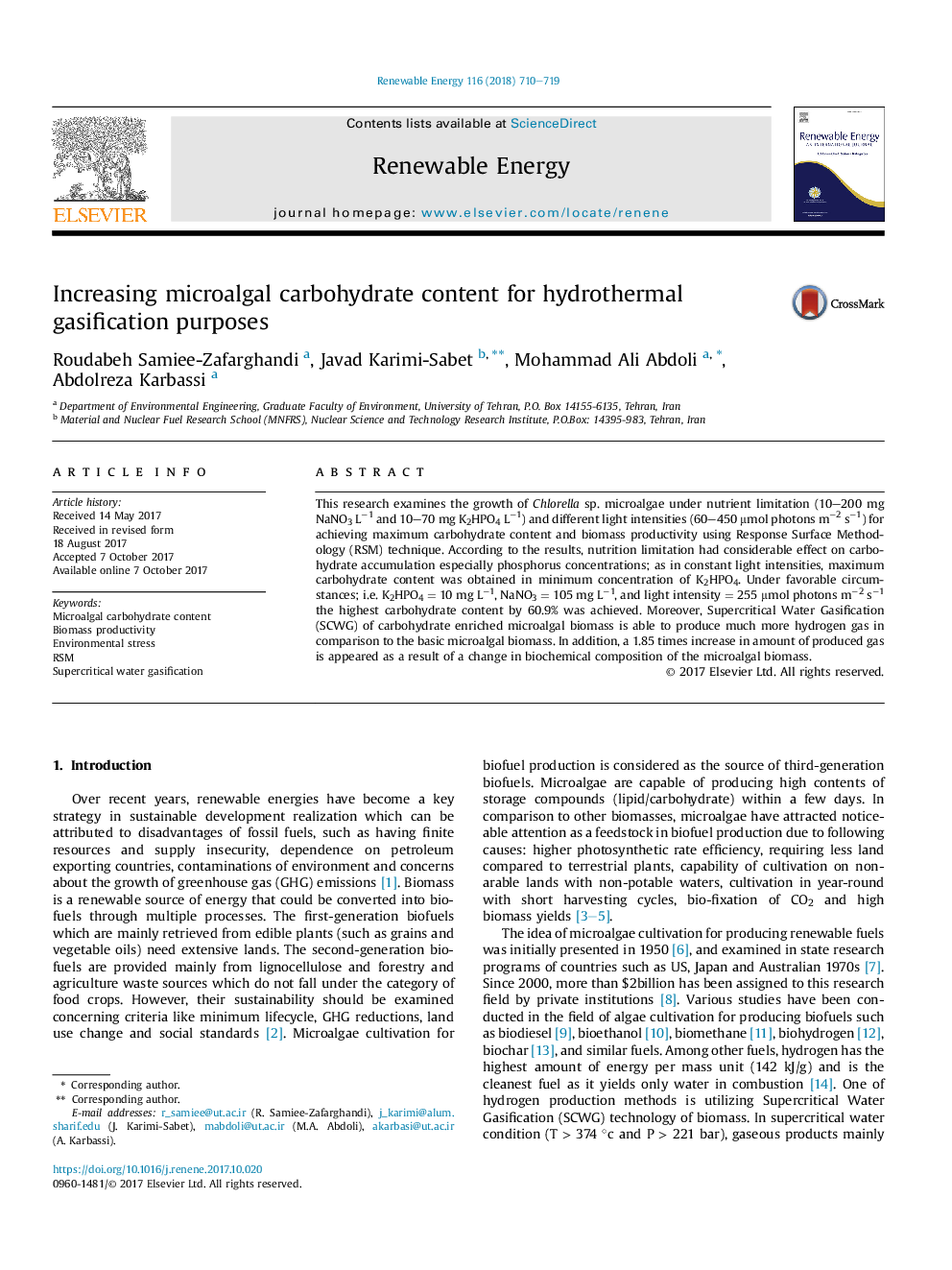| Article ID | Journal | Published Year | Pages | File Type |
|---|---|---|---|---|
| 4925937 | Renewable Energy | 2018 | 10 Pages |
Abstract
This research examines the growth of Chlorella sp. microalgae under nutrient limitation (10-200 mg NaNO3 Lâ1 and 10-70 mg K2HPO4 Lâ1) and different light intensities (60-450 μmol photons mâ2 sâ1) for achieving maximum carbohydrate content and biomass productivity using Response Surface Methodology (RSM) technique. According to the results, nutrition limitation had considerable effect on carbohydrate accumulation especially phosphorus concentrations; as in constant light intensities, maximum carbohydrate content was obtained in minimum concentration of K2HPO4. Under favorable circumstances; i.e. K2HPO4 = 10 mg Lâ1, NaNO3 = 105 mg Lâ1, and light intensity = 255 μmol photons mâ2 sâ1 the highest carbohydrate content by 60.9% was achieved. Moreover, Supercritical Water Gasification (SCWG) of carbohydrate enriched microalgal biomass is able to produce much more hydrogen gas in comparison to the basic microalgal biomass. In addition, a 1.85 times increase in amount of produced gas is appeared as a result of a change in biochemical composition of the microalgal biomass.
Related Topics
Physical Sciences and Engineering
Energy
Renewable Energy, Sustainability and the Environment
Authors
Roudabeh Samiee-Zafarghandi, Javad Karimi-Sabet, Mohammad Ali Abdoli, Abdolreza Karbassi,
